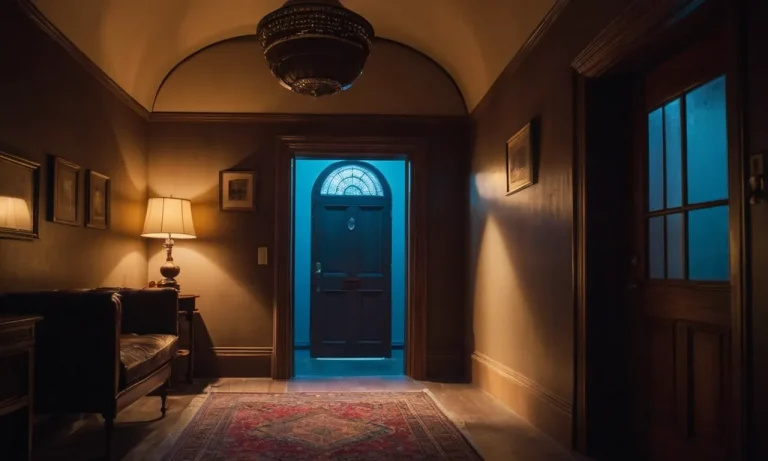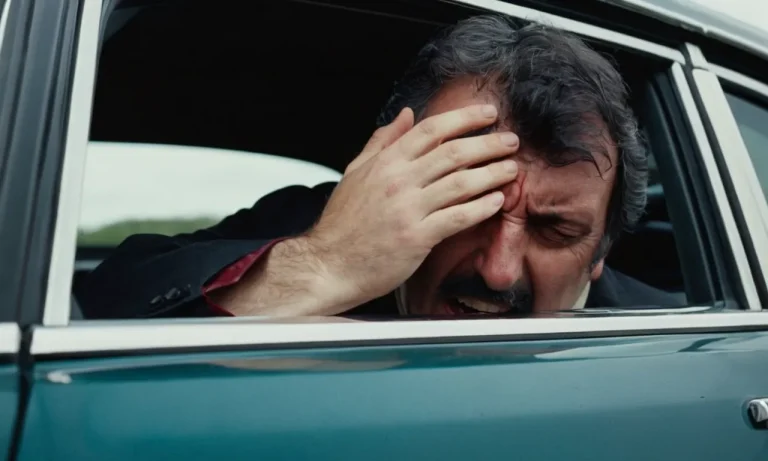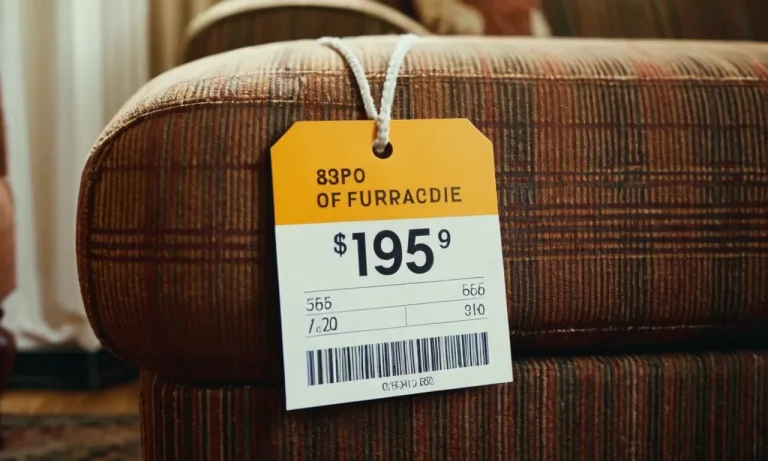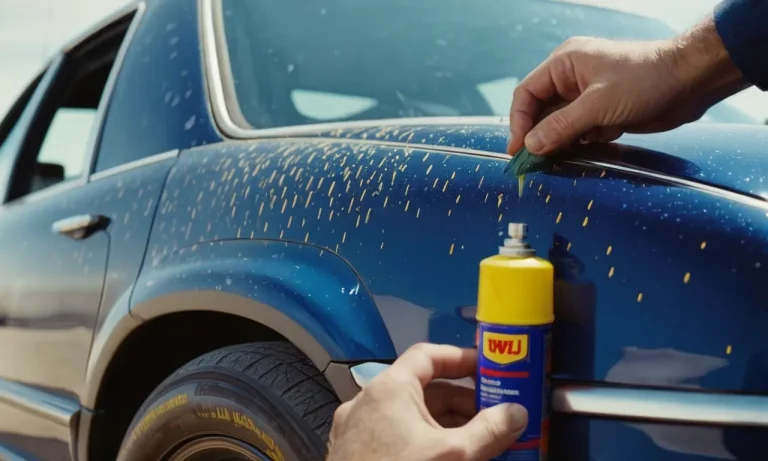Does Kilz Paint Kill Mold? A Detailed Look
Mold is a common problem in many homes and buildings. It can cause structural damage, health issues, and make a space look dirty and neglected. Many homeowners want to know if painting over mold with Kilz primer will kill it and prevent future growth.
In this detailed article, we’ll examine whether Kilz is an effective treatment for killing mold.
If you’re short on time, here’s a quick answer: Painting over mold with Kilz primer may temporarily hide mold and prevent spores from spreading through the air. However, Kilz does not kill mold or stop it from growing underneath the paint.
To fully remove mold, you must eliminate the source of moisture that allowed it to grow in the first place.
What Causes Mold to Grow?
Mold is a common problem in many homes and can be caused by a variety of factors. Understanding the causes of mold growth is important in order to effectively prevent and address this issue. Here are some of the main reasons why mold tends to thrive in certain environments:
Excess Moisture
Excess moisture is one of the primary contributors to mold growth. When there is a high level of humidity or water leaks in a home, it creates an ideal environment for mold spores to multiply. Areas such as bathrooms, kitchens, and basements are particularly susceptible to mold growth due to their higher moisture levels.
It is important to address any sources of excess moisture promptly to prevent mold from developing.
Poor Ventilation
Poor ventilation can also contribute to mold growth. When air circulation is limited, moisture tends to accumulate in enclosed spaces, providing a breeding ground for mold. Rooms with inadequate ventilation, such as closets or areas with blocked air vents, are more prone to mold problems.
Ensuring proper ventilation throughout your home can help prevent mold growth and improve overall air quality.
Leaky Roofs or Pipes
Leaky roofs or pipes can introduce moisture into your home, leading to mold growth. If water is seeping through a damaged roof or a leaking pipe, it can create a damp environment that is conducive to mold development.
Regularly inspecting your roof and plumbing system for any leaks or damage can help prevent mold growth caused by these issues.
It is important to note that these are just some of the main causes of mold growth and there may be other factors specific to your home environment. If you suspect mold growth or have persistent moisture issues, it is recommended to consult with a professional for a thorough assessment.
Dangers of Mold Exposure
Mold is a common problem that many homeowners face. While it may seem harmless, mold can actually pose serious risks to your health and property. In this section, we will explore the various dangers of mold exposure.
Allergic Reactions
One of the main dangers of mold exposure is the potential for allergic reactions. Mold spores can trigger allergic symptoms such as sneezing, coughing, itching, and watery eyes in individuals who are sensitive to mold.
These reactions can be particularly severe in people with asthma or other respiratory conditions.
According to the Centers for Disease Control and Prevention (CDC), some people may also experience more severe allergic reactions, such as fever and shortness of breath, when exposed to mold. It is important to note that the severity of allergic reactions can vary depending on the individual and the type of mold present.
Respiratory Problems
Exposure to mold can also lead to respiratory problems. When mold spores are inhaled, they can irritate the respiratory system and cause symptoms such as coughing, wheezing, and difficulty breathing. Prolonged exposure to mold can even lead to the development of respiratory conditions like bronchitis or pneumonia.
A study published in the American Journal of Respiratory and Critical Care Medicine found that individuals living in mold-infested homes were more likely to experience respiratory symptoms and have reduced lung function compared to those living in mold-free homes.
This highlights the importance of addressing mold issues promptly to protect respiratory health.
Property Damage
In addition to its impact on health, mold can also cause significant damage to your property. Mold thrives in moist environments and can grow on various surfaces, including walls, ceilings, and furniture.
Over time, mold can weaken and deteriorate these materials, leading to structural damage and costly repairs.
According to the Environmental Protection Agency (EPA), mold can also cause discoloration and staining, which can be difficult to remove. In severe cases, mold growth can compromise the integrity of the building, requiring extensive remediation efforts.
To prevent property damage and protect your investment, it is crucial to address mold issues promptly and take necessary measures to prevent its recurrence.
Does Painting Over Mold With Kilz Work?
Many homeowners facing a mold problem may consider painting over it as a quick fix. One popular product often used for this purpose is Kilz paint. Kilz is a primer and sealer that is known for its ability to cover stains, including mold.
While it may seem like a convenient solution, it’s important to understand the limitations of using Kilz paint on mold.
Hides Mold Temporarily
One benefit of using Kilz paint on mold is that it can temporarily hide the appearance of mold. The paint’s thick consistency and high opacity can help to cover up the dark spots typically associated with mold growth.
This can be especially useful if you are preparing to sell your home or have guests coming over and want to improve the aesthetic appeal of the affected area.
Doesn’t Kill Mold or Stop Growth
Despite its ability to hide mold temporarily, Kilz paint does not actually kill mold or stop its growth. Mold is a persistent problem that requires proper remediation to eliminate it completely. Simply painting over mold with Kilz will not address the underlying issue and may lead to further mold growth in the future.
It’s important to remember that mold can spread and cause health issues if not properly dealt with.
Traps Moisture and Spores Under Paint
Another concern with using Kilz paint on mold is that it can trap moisture and mold spores underneath the paint. Mold needs moisture to thrive, and by sealing it beneath a layer of paint, you are effectively creating a favorable environment for mold growth.
Over time, the mold may continue to grow and spread, causing more extensive damage to your walls or other affected surfaces.
It is crucial to address mold issues appropriately by identifying the source of moisture, removing the mold, and properly treating the surfaces. Consulting with a professional mold remediation specialist can help ensure that the problem is handled effectively and safely.
For more information on mold remediation and how to deal with mold problems in your home, you can visit reputable websites such as the Centers for Disease Control and Prevention (www.cdc.gov/mold) or the Environmental Protection Agency (www.epa.gov/mold).
Proper Mold Removal Techniques
Identify and Fix Moisture Source
One of the most important steps in proper mold removal is identifying and fixing the moisture source that is causing the mold growth. Mold thrives in damp and humid environments, so it’s crucial to address any leaks, condensation, or water damage in your home.
This could involve repairing a leaky pipe, improving ventilation in a bathroom, or fixing a faulty roof. By eliminating the source of moisture, you can prevent mold from returning in the future.
Remove Moldy Materials
Once you have addressed the moisture issue, the next step is to remove any moldy materials. This includes items such as drywall, carpeting, insulation, and furniture that have been affected by mold. It’s important to wear protective gear, such as gloves and masks, to avoid inhaling mold spores and to prevent the spread of mold to other areas of your home.
Proper disposal of moldy materials is essential to prevent further contamination.
Apply Mold Killing Products
After removing the moldy materials, it’s time to apply mold killing products to the affected areas. There are various mold killing products available on the market, including bleach, vinegar, hydrogen peroxide, and commercial mold removers.
It’s important to follow the instructions on the product label and use the appropriate protective gear when applying these products. Keep in mind that not all mold killing products are effective against all types of mold, so it’s important to choose the right product based on the type of mold you are dealing with.
Ensure Proper Ventilation and Circulation
Proper ventilation and circulation are crucial in preventing mold growth. Mold thrives in stagnant air, so it’s important to ensure that your home has proper ventilation in areas prone to moisture, such as bathrooms, kitchens, and basements.
This can be achieved through the use of exhaust fans, opening windows to let fresh air in, and using dehumidifiers to reduce humidity levels. Additionally, it’s important to regularly clean and maintain your HVAC system to ensure proper air circulation throughout your home.
For more detailed information and expert advice on proper mold removal techniques, you can visit websites like the Environmental Protection Agency (EPA) or consult with a professional mold remediation company.
When to Call a Professional for Mold Removal
Mold can be a serious issue in any home or building, and it’s important to know when to call a professional for mold removal. While there are some instances where you may be able to handle mold cleanup yourself, there are certain situations that require the expertise of a professional.
Here are some key indicators that it’s time to bring in the experts:
Large Areas of Visible Mold
If you have large areas of visible mold growth, it’s best to leave the job to the professionals. Trying to clean up a significant amount of mold on your own can be dangerous and ineffective. Professionals have the necessary equipment and expertise to properly assess the extent of the mold growth and safely remove it.
Mold Growing in Hidden Places
Mold can often grow in hidden places such as behind walls, under flooring, or in ductwork. These areas can be difficult to access and require specialized equipment to properly remove the mold. A professional mold remediation team will have the tools and knowledge to locate and eliminate mold in these hidden areas, ensuring a thorough cleanup.
Sensitivities to Mold Exposure
Some individuals may have sensitivities or allergies to mold, which can lead to respiratory issues, skin irritation, or other health problems. If you or someone in your household is experiencing symptoms related to mold exposure, it’s important to call a professional for mold removal.
They can help identify the source of the mold and ensure it is completely eradicated, reducing the risk of further health issues.
Unsure of Moisture Source
If you discover mold but are unsure of the source of moisture that is causing it, it’s best to consult with a professional. Mold is often a sign of underlying water damage, such as a leaky pipe or roof.
A professional mold remover will not only address the mold issue but also help you identify and address the source of moisture, preventing future mold growth.
Remember, mold can be hazardous to your health and can cause significant damage to your property. It’s always better to err on the side of caution and call a professional for mold removal if you’re unsure about handling it yourself.
Conclusion
Mold can cause extensive damage to a home if left unchecked. Painting over mold with Kilz may seem like a quick fix but does not properly address the root cause. To fully remove mold, you must identify and fix all moisture sources, thoroughly clean contaminated areas, and ensure proper ventilation.
For large or challenging cases of mold, calling a professional may be your safest option. With prompt, comprehensive mold removal, you can protect the health of your family and the integrity of your home.







